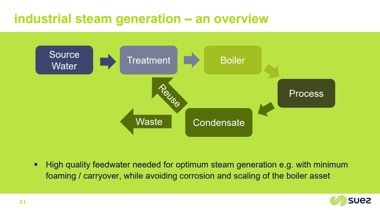Research institute uses Sievers InnovOx TOC Analyzer to evaluate hydraulic fracturing and oil exploration produced water
Background
The Global Petroleum Research Institute (GPRI) at Texas A&M University-College Station regularly conducts laboratory research studies on various oil and gas produced wastewaters with varying sample matrices. The GPRI tests samples at different shale and oil producing formations using a mobile laboratory, which houses a pilot-scale treatment system for identifying the best treatment options for hydraulic fracturing (frac) and produced water reuse.
Challenge
GPRI needed a new, robust method to test the organic water quality at various locations. The technology also needed to be portable and easily incorporated into their mobile laboratory. GPRI had never used a Total Organic Carbon (TOC) analyzer for measuring water quality before, because past technologies had difficulties handling the complex chemistry and high salt content in these samples.
However, GPRI decided to investigate TOC/NPOC (Non-Purgeable Organic Carbon) technologies that could provide precise, accurate, and reliable results in the field and handle the wide range of matrix interferences typically encountered in frac and oil exploration produced waters.
Solution
GPRI selected the Sievers InnovOx Laboratory TOC Analyzer to test because of its robust Supercritical Water Oxidation (SCWO) technology that can handle tough brine samples. In addition, the InnovOx could be easily incorporated into GPRI’s mobile lab and moved around as needed for sample collection and analysis. For more than 18 months, GPRI has successfully conducted several large-scale field and laboratory studies of gas shale produced wastewaters and drilling waste.
Although the waters from these processes were very high in bromides, silica, chlorides, oils, color and solids, the SCWO Method enabled the Sievers InnovOx Lab to produce both accurate and precise results. Additionally, sample interferences were negated and there were no false positive or negative readings in the final results.
GPRI has successfully conducted over 400 TOC/NPOC analyses in a wide range of sample matrices using the Sievers InnovOx Lab and the SCWO technology. SCWO has enabled accurate analyses in water samples with sodium chloride as high as 300,000 mg/L. The Sievers InnovOx Lab has demonstrated that it is a reliable TOC/NPOC analyzer for both field and laboratory use, which provides robust oxidation chemistries in difficult matrices. It successfully monitors frac flowback and produced waters from unconventional oil and gas applications.
The technical assistance from the applications chemist at SUEZ has also been a tremendous asset to problem solving and methods modifications. The user-friendly software guides users through the methods and sample set-up. The final PDF reports are printer-friendly and ready to read without having to “mine” for data and results. Calibrations up to 50,000 ppm are simplified with ready-to-use Sievers standards.
GPRI continues to conduct studies and relies heavily on the simplicity and portability of the Sievers InnovOx Lab and the dependable results that SCWO provides. The Sievers InnovOx Lab has proven to be a huge leap forward in TOC/NPOC analyses and has changed the perspective of analyzing otherwise “impossible samples” for organics in the oil and gas industry.






